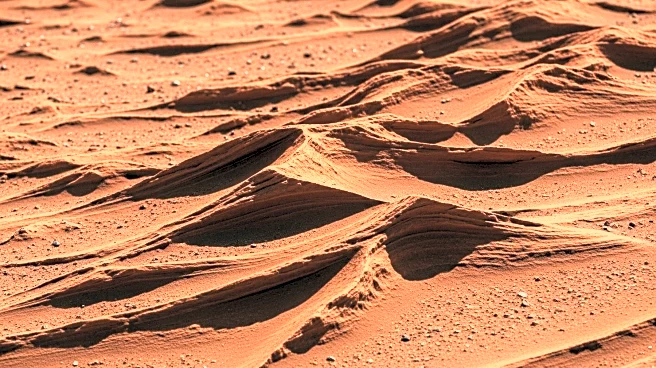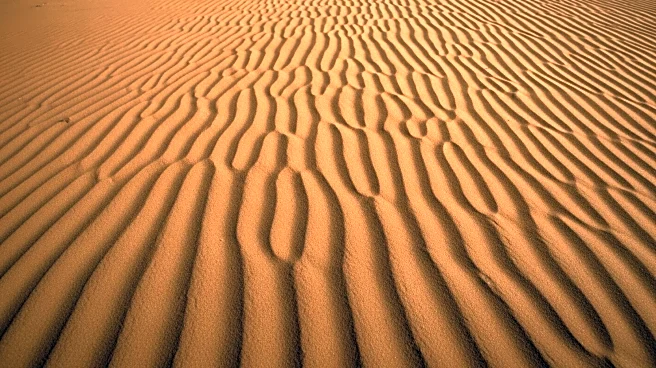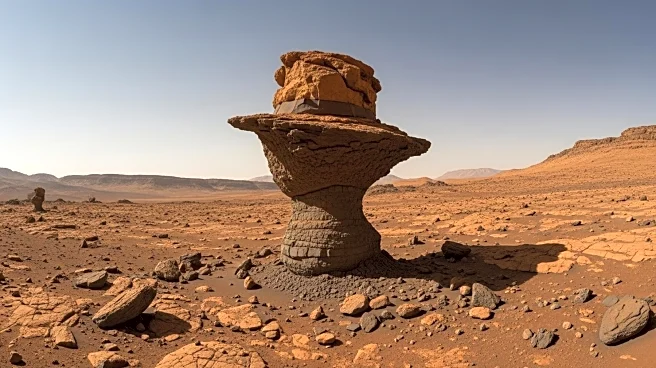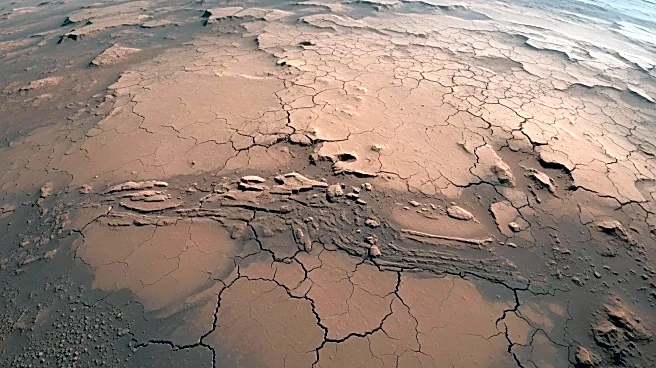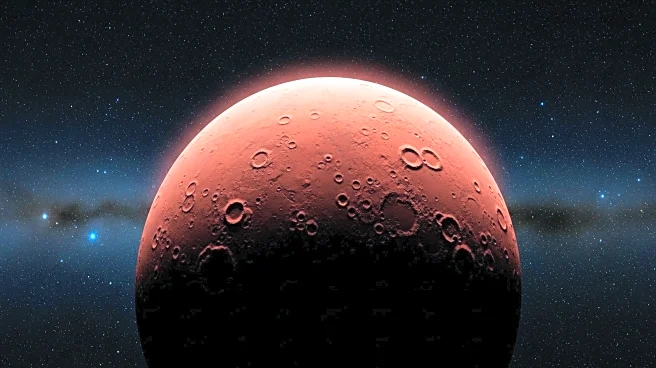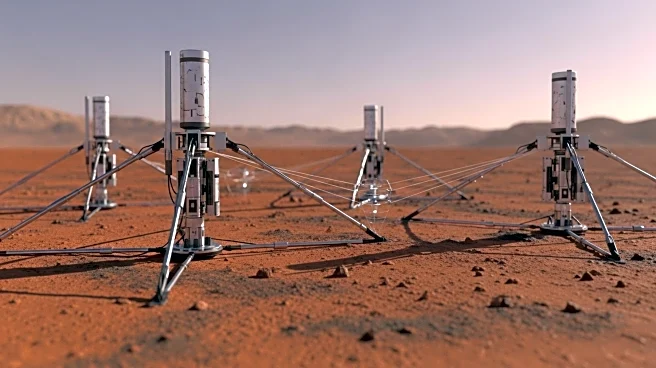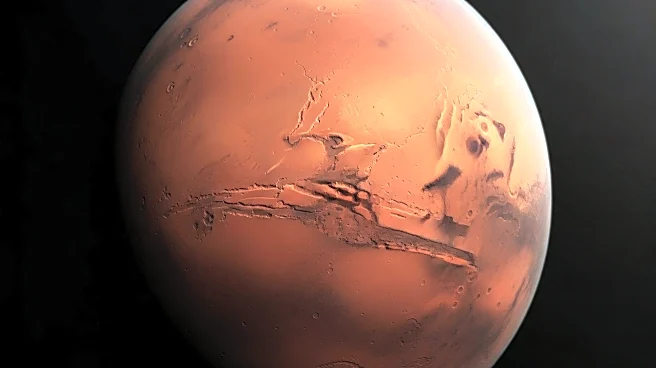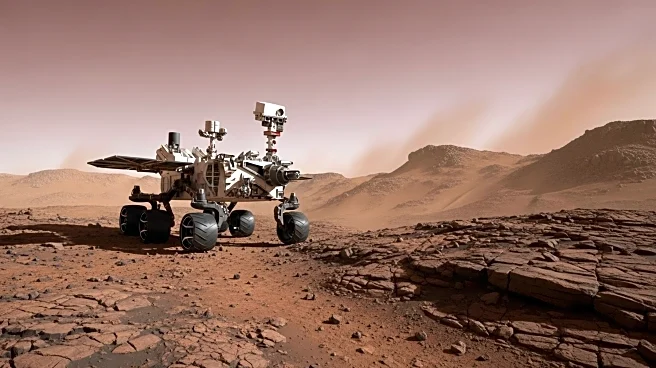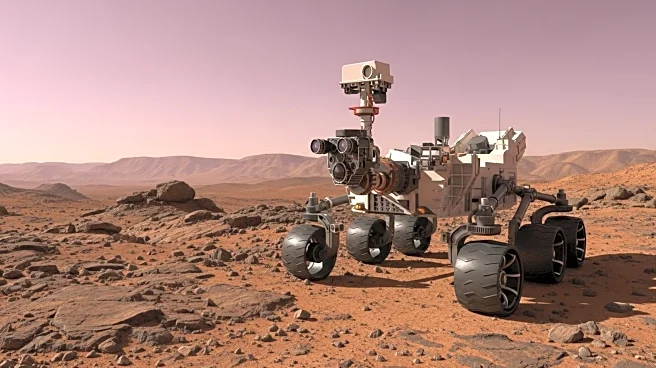What's Happening?
NASA's Perseverance rover has captured images of wind-carved sand formations known as 'megaripples' on Mars. These formations, located at a site called Kerrlaguna, are part of the rover's ongoing exploration of the Martian surface. Megaripples are sandy ridges that rise up to about three feet high and are remnants from a time when Mars had a thicker atmosphere and stronger winds. The rover's investigation aims to understand how Martian winds continue to shape the landscape, providing insights into the planet's modern environment.
Why It's Important?
Studying megaripples on Mars is essential for understanding the planet's current geological activity and its historical climate changes. These formations offer clues about Mars' atmospheric conditions over millions of years and may reveal interactions with water. The research could inform future human missions to Mars, as understanding the surface dynamics is crucial for planning exploration and resource utilization. The findings also contribute to the broader understanding of planetary geology and the processes that shape planetary surfaces.
What's Next?
Perseverance is expected to continue its exploration southward to a larger field of megaripples at a site called 'Lac de Charmes.' NASA plans a more in-depth campaign at this location to further study the Martian surface dynamics. The rover's findings will be analyzed to prepare for future missions and potential human exploration, focusing on resource identification and environmental understanding.
Beyond the Headlines
The study of Martian megaripples highlights the importance of understanding planetary surface processes and their implications for climate and habitability. It raises questions about the potential for similar formations on other planets and their role in shaping planetary environments. The research also emphasizes the need for advanced imaging technology to detect subtle geological changes over time.
